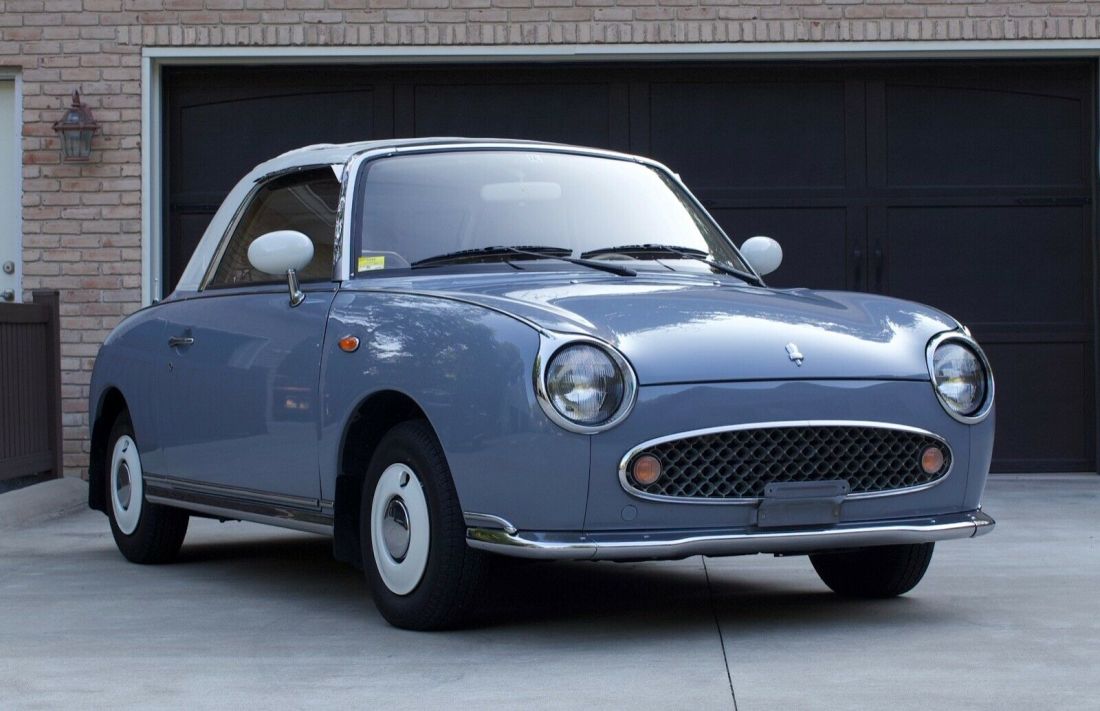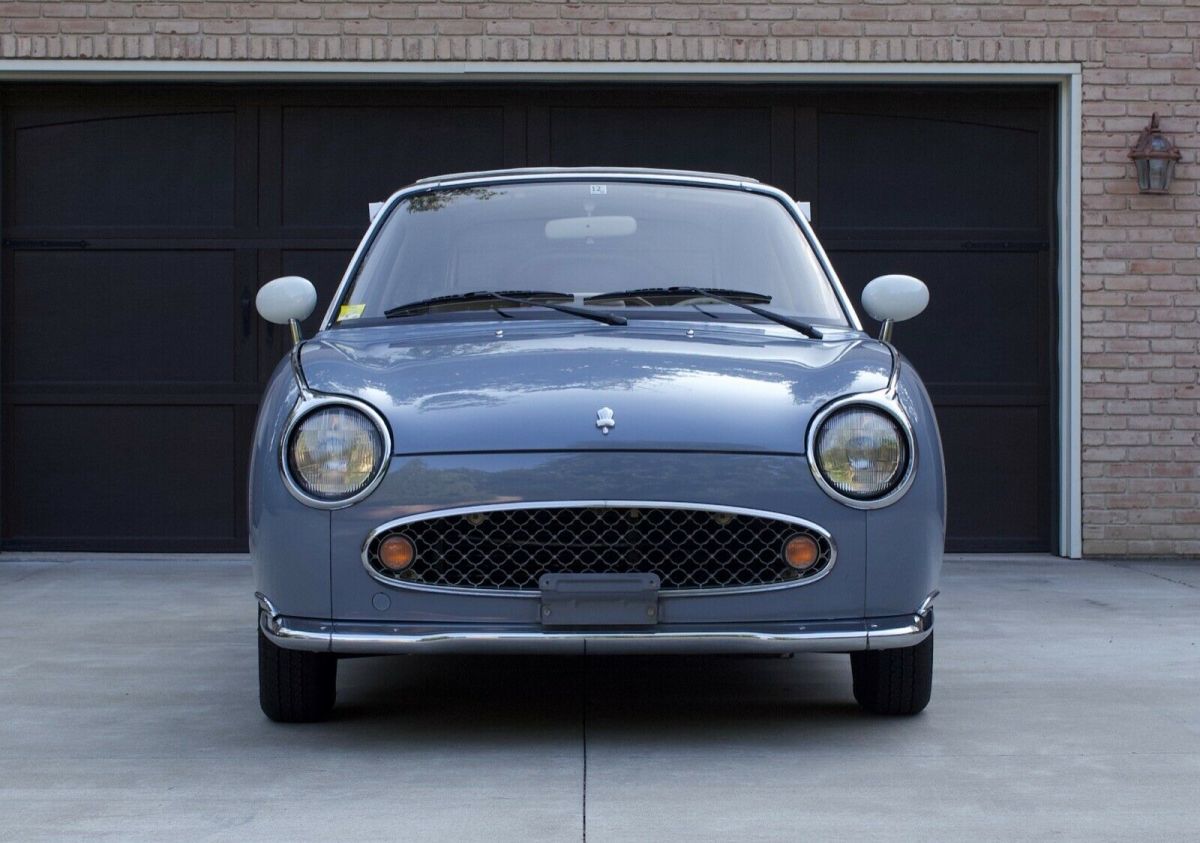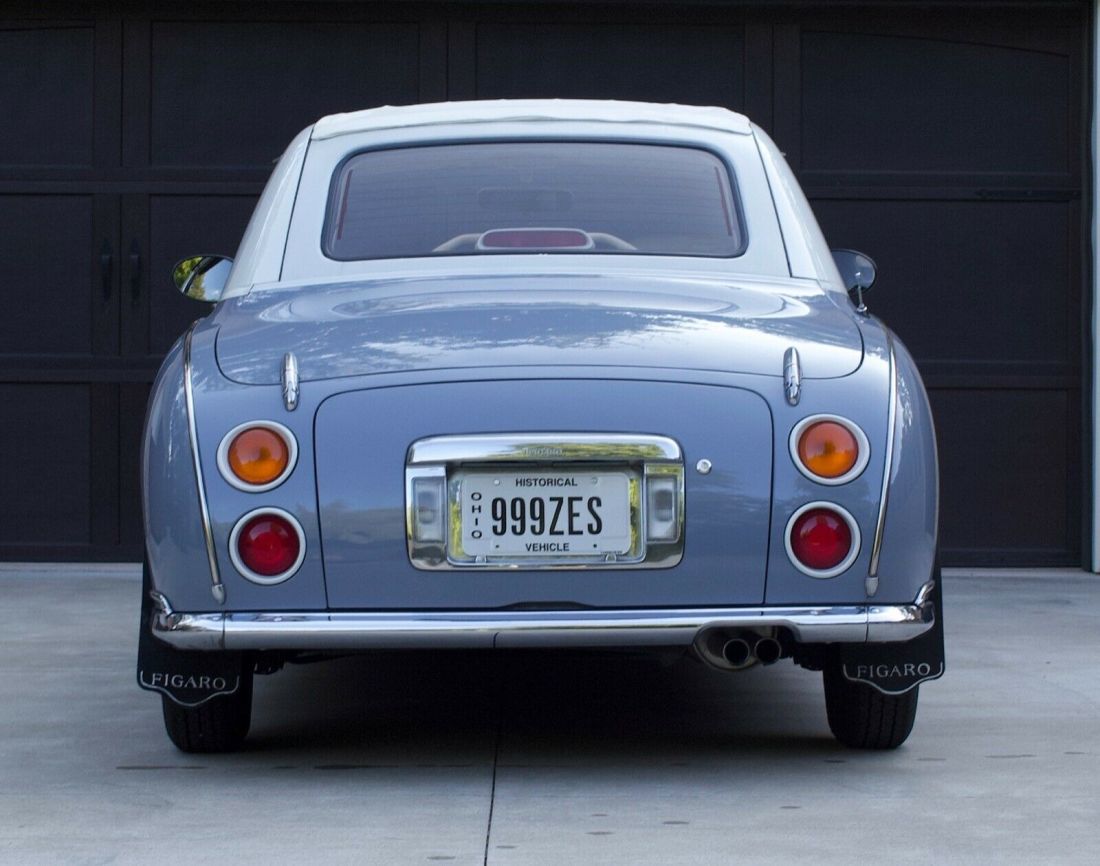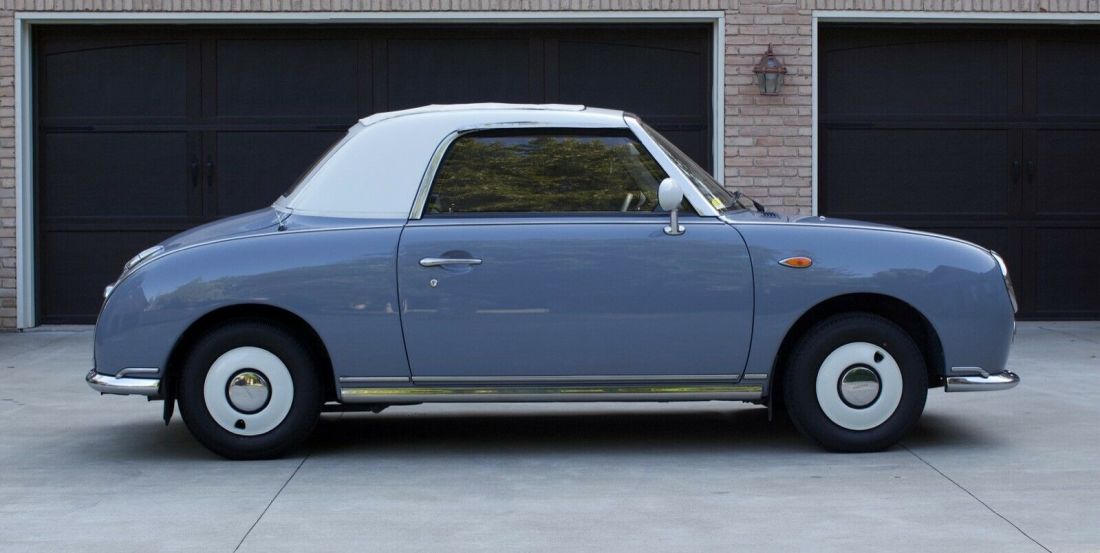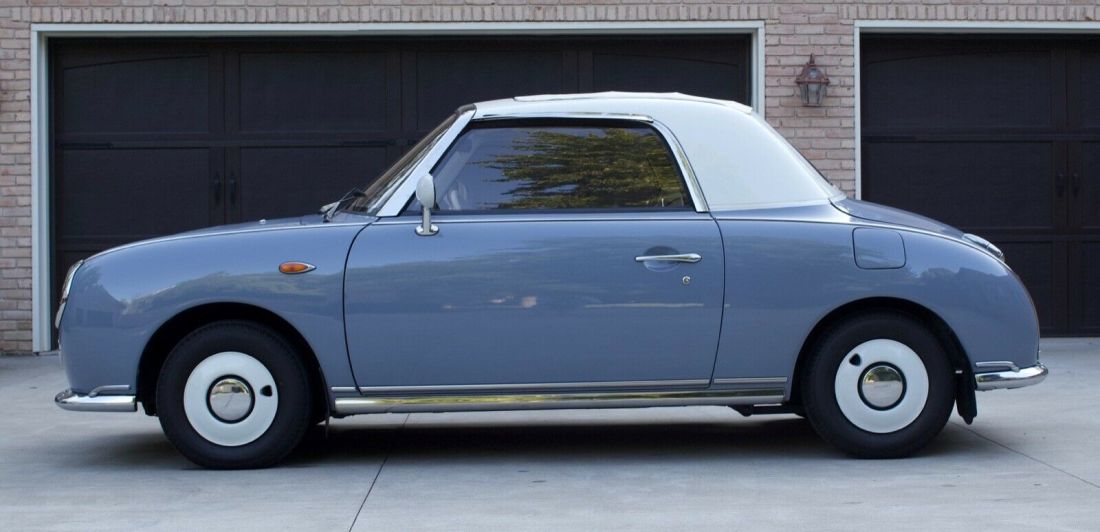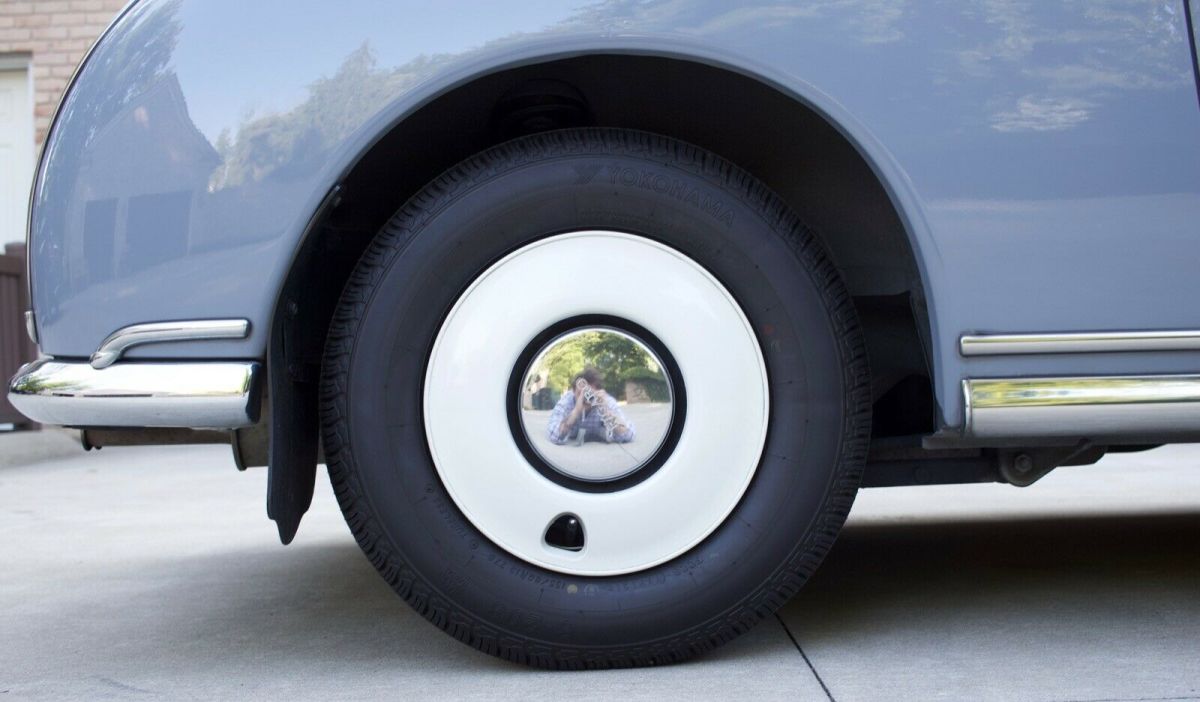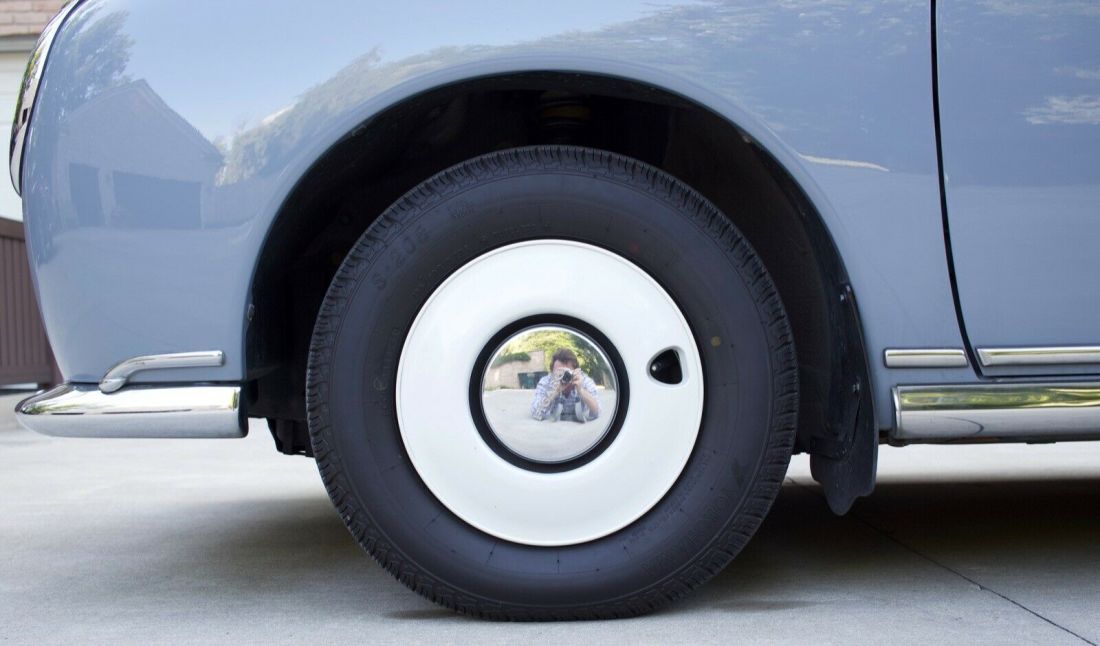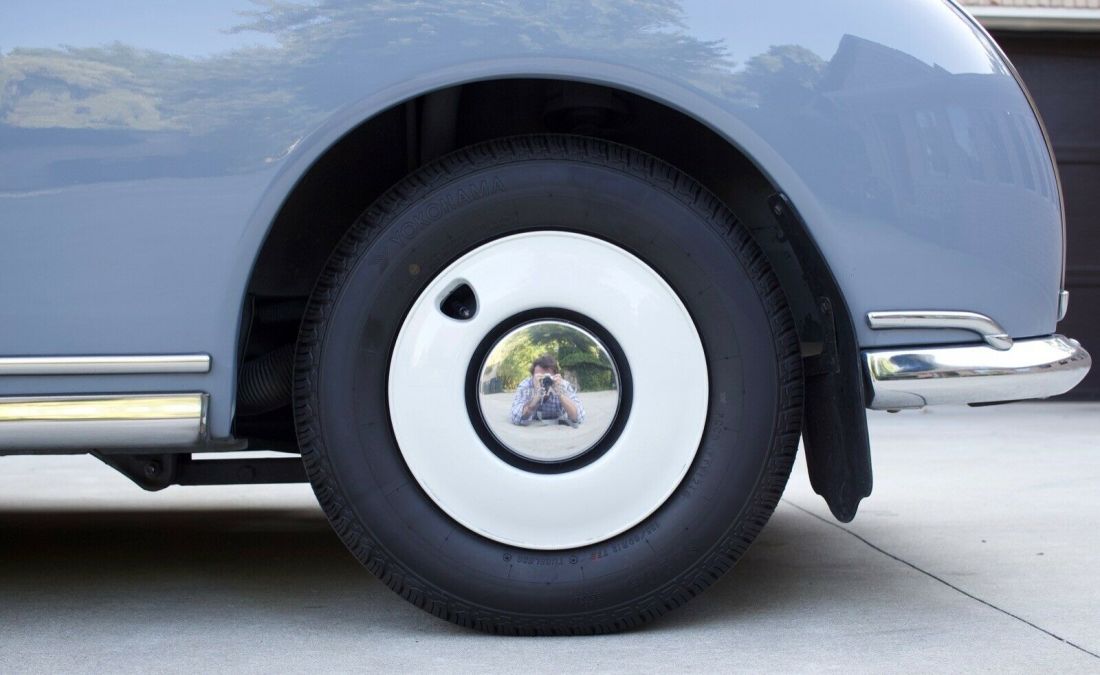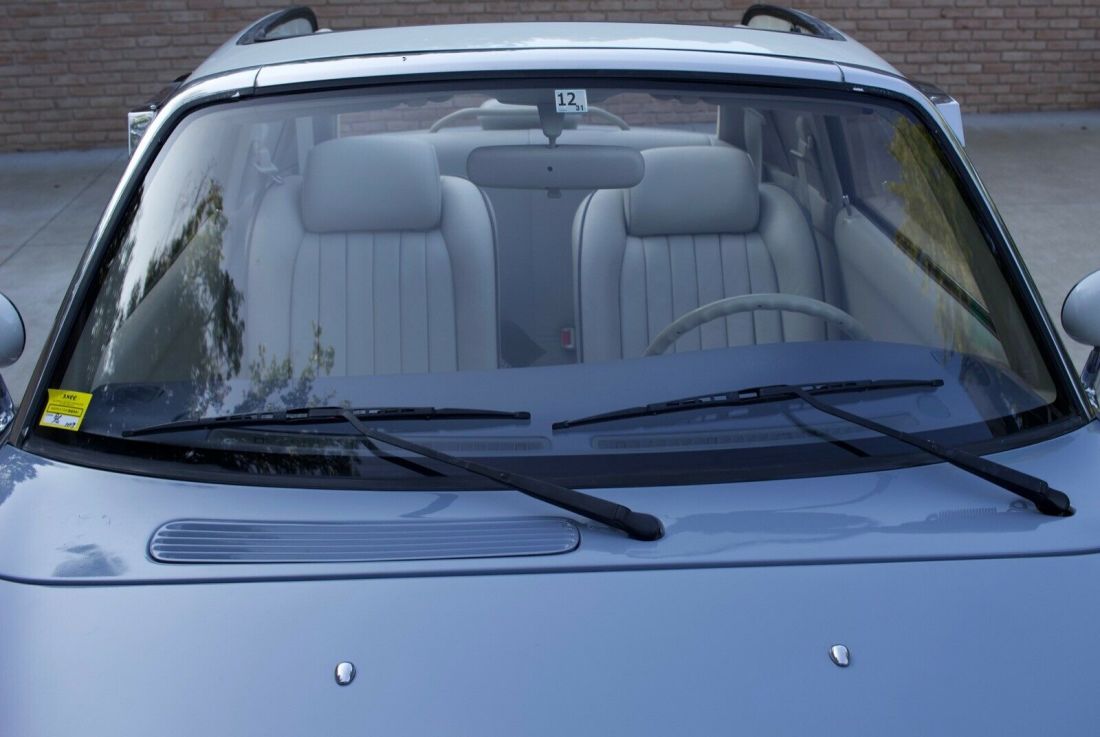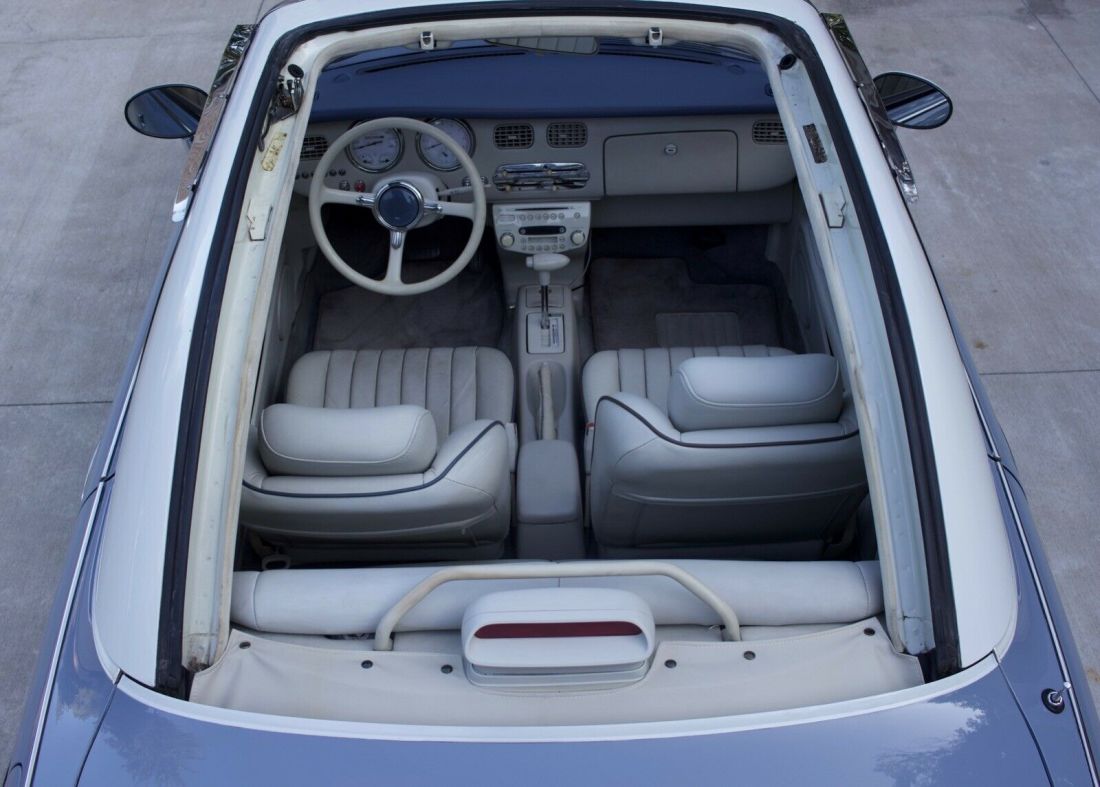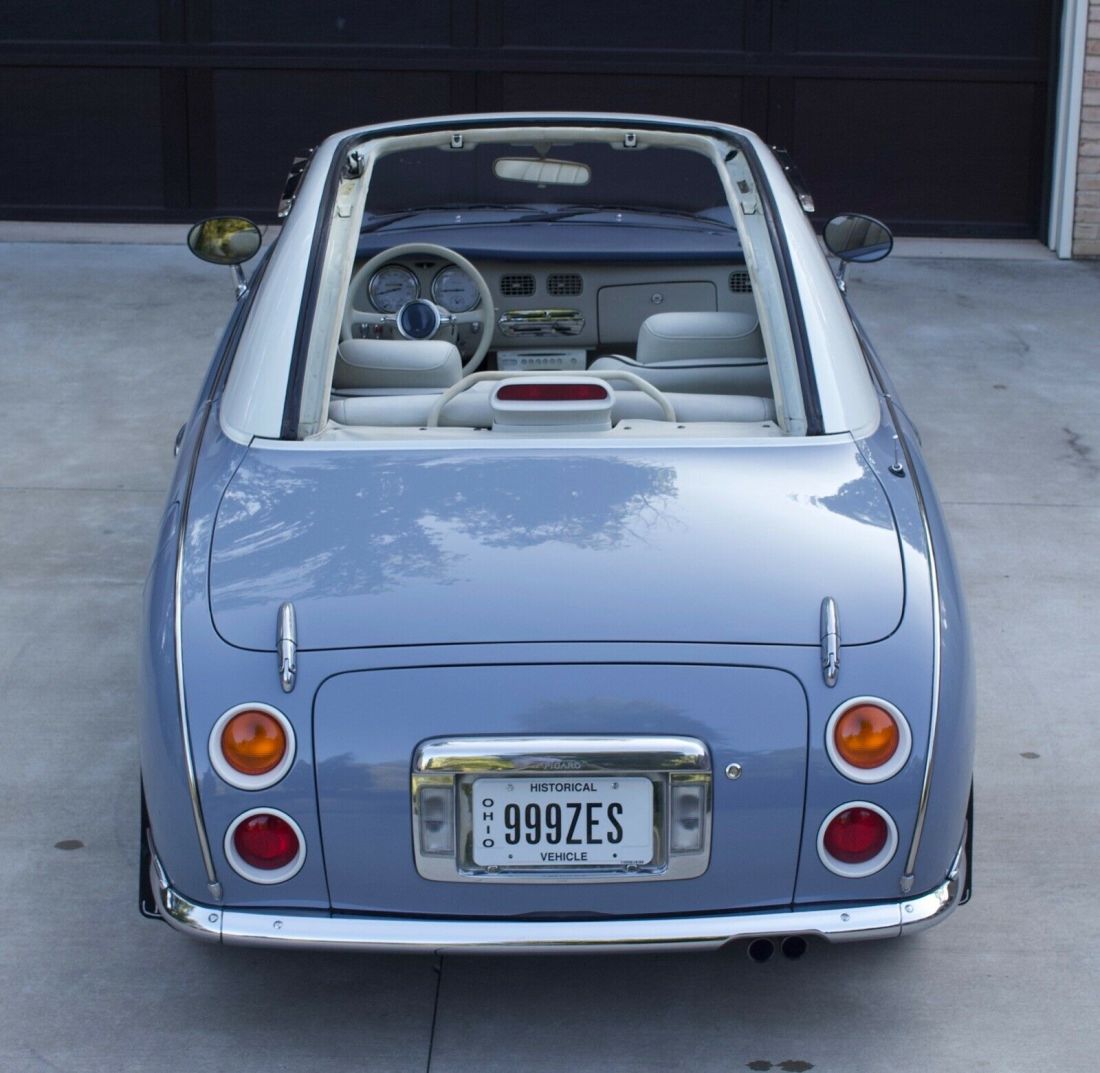1991 Nissan Figaro ( LEFT HAND DRIVE )
- Location: Hudson, Ohio, United States
- Condition: Used
- Make: Nissan
- Model: Other
- Type: Convertible
- Year: 1991
- Mileage: 38432
- VIN: 00000000000000000
- Color: Lapis Grey
- Engine size: 1.0L Turbo
- Number of cylinders: 4
- Power options: Air Conditioning, Power Windows
- Fuel: Gasoline
- Transmission: Automatic
- Drive type: FWD
- Interior color: Ivory
- Drive side: Left-hand drive
- Options: Convertible, Leather Seats
- Vehicle Title: Clean
1991 Nissan Other Description
VIN NUMBER IS JAPANESE AND EBAY WILL NOT LET ME LIST IT WITH SUCH.
ACTUAL VIN NUMBER IS:FK10-015654
I purchased and imported this Nissan Figaro late last year. I had the vehicle converted to left hand drive at a shop in Japan and then subsequently imported here to Ohio. The car has a clean Ohio title and has gone through all of the importing processes. After arrival from Japan, I had the stereo rebuilt at the clarion factory and is now identical to the original model but with all of the modern features you would find on a new car (ie. Bluetooth, aux port, etc.). I also had the car's paint corrected and any dents removed. The car then both received an extensive detail inside and out and high end coatings both in and out. I also had the engine detailed and the turbo heat shield powder coated. I also installed a battery cut off switch, and replaced the speakers with upgraded Alpine units. I replaced any bulbs that burnt out. I have a box full of extra parts for the cars as well. This vehicle for sell is in the Lapis Grey color-way. If you have any questions, don’t hesitate to contact me. THERE ARE ONLY A VERY SMALL HANDFUL OF LHD VEHICLES IN THE WORLD. Thank you.
THE Nissan Figaro IS FEATURED IN THE NEWEST SEASON OF “COMEDIANS IN CARS GETTING COFFEE” HOSTED BY JERRY SEINFELD AND AVAILABLE TO VIEW ON NETFLIX (Season 11, Episode 10).
It was also featured on the new season of Jay Leno's Garage (Season 5, Episode 4 "Modern Icons").
Please find these 5 videos to better assist you in evaluating the car:
https://youtu.be/1Hy4RjZV9Aw (Cold Start)
https://youtu.be/RBv76HUnCes (Warm Engine)
https://youtu.be/gARSln3Jl1g (Airconditioning)
https://youtu.be/IDkeyNxAJcY (Radio)
https://youtu.be/HTVXxsOnQdE (Quick Drive)
Brief history of the Figaro (via Wikipedia):
The Nissan Figaro is a front-engine, front-wheel drive, retro-styled two-door, 2+2, fixed-profile convertible manufactured by Nissan for model year 1991, and marketed in Japan at Nissan Cherry Stores.
With its design variously attributed to Naoki Sakai[1] and/or Shoji Takahashi,[2] 20,000 examples were marketed by Nissan in the convertible's single year of production[3] — all with right hand drive.[4]
Because of its origins at Pike Factory, Nissan's special project group, the Figaro (along with the Nissan Pao, Be-1 and S-Cargo) are known as Nissan's "Pike cars," and represented a design strategy that adapted "design and marketing strategies from other industries like personal electronics."[2]
In 2011, noted design critic Phil Patton, writing for the New York Times, called the Pike cars "the height of postmodernism"[2] and "unabashedly retro, promiscuously combining elements of the Citroën 2CV, Renault 4, Mini and Fiat 500."[2]
Nissan introduced the Figaro at the 1989 Tokyo Motor Show, using "Back to the Future" as its marketing tagline.
Based on the first-generation Nissan Micra, the Figaro was manufactured at Aichi Machine Industry,[1] a special projects group which Nissan would later call "Pike Factory," which also produced three other niche vehicles: the Be-1, Pao and S-Cargo.
As a fixed-profile convertible, the upper side elements of the Figaro's bodywork remain fixed, while its fabric soft top retracts in conjunction with a solid panel with a defroster-equipped glass rear window. The fixed-profile concept is seen on other convertibles, including the Vespa 400 (1957), Citroën 2CV (1948–1990), the Nash Rambler Convertible "Landau" Coupe (1950), and the 1957 Fiat 500 — as well its 2007 Fiat 500 successor.
Based on the Nissan March platform, the Figaro uses a 1.0-liter (987 cc) turbocharged engine generating 76 hp (57 kW; 77 PS) and 78 lb⋅ft (106 N⋅m) of torque through a 3-speed automatic transmission, front MacPherson struts, rear four-link coil spring suspension; rack and pinion steering, front ventilated disc and rear drum brakes.[5] The Figaro can reach a top speed of 106 mph (170.59 km/h). Weight saving front fenders are thermoplastic resin.[5]
Standard equipment included ivory leather seats with contrasting piping, air conditioning, CD player, chrome and Bakelite-style knobs, soft-feel paint on the dashboard top, chrome-trimmed speedometer with smaller inset gauges for fuel and engine temperature; and chrome-trimmed tachometer with inset clock.[5] The four available exterior paint colors represent the four seasons: Topaz Mist (Autumn), Emerald Green (Spring), Pale Aqua (Summer) and Lapis Grey (Winter).[5][6]
8,000 Figaros were originally manufactured, with an additional 12,000 subsequently manufactured to meet demand. Prospective purchasers entered a lottery to purchase a Figaro.[7] Limited edition cars came with passenger side baskets and cup holders.
As of 2018, more than 3,000 of the cars were registered as being in active use in Britain.[7]
- Suspension: Four-wheel independent
- Front: Strut-type
- Rear: 4-link, solid axle, with stabilizer bar (anti-roll bar)
- Front wheel drive
- Brakes: Power-assisted ventilated front discs, rear drums
- Tire size: 165/70R12 77H Cold climate spec: 155SR12 (155/80R12)
Weight
- Kerb weight: 810 kg (1786 lb)
- Max laden weight: 1235 kg (2723 lb)
- Max rolling weight: 1835 kg (4045 lb)
- Max load (front axle): 620 kg (1367 lb)
- Max load (rear axle): 625 kg (1378 lb)
- Max trailer weight (without brakes): 310 kg (683 lb)
- Max trailer weight (with brakes): 600 kg (1323 lb)
Performance
- Turning circle (kerb to kerb): 4.7 m (15 ft 5 in)
- Fuel economy: 7.3 L/100 km (39 mpg‑imp; 32 mpg‑US)
- Fuel consumption rate: 60 km/h (37 mph) running, on level ground: 4.1 L/100 km (69 mpg‑imp; 57 mpg‑US)
Engine
- Bore and stroke: 68.0 mm × 68.0 mm (2.68 in × 2.68 in)
- Compression ratio: 8.0:1
- Fuel delivery: ECCS (ECU-controlled multi-point injection)
- Fuel type/capacity: Super unleaded/40L (8.8 imp gal or 10.6 US gal)
Features
- Three-point seat belts (no airbags)
- Rear seat: Three-point seat belts
- Driver's seat belt not fastened warning (buzzer)
- High-mount stop lamp
- Genuine leather seats standard equipment
- Low-mount headrest
- Synthetic leather piping
Top
- Retractable fabric top with fixed-profile two-tone bodywork
- Top fully retracts into concealed nacelle.
- Top equipped with a double lock and warning buzzer as a safety feature
- Secondary hood latch
- Glass rear window with defrosters
Body
- Flush mount apron and flush mount fender
- Glassfibre resin material with an outer gel coat atr front fenders and front grill surround
- Fluoroplastic paint
 1991 Nissan Figaro 1.0L Engine Right Hand Drive
1991 Nissan Figaro 1.0L Engine Right Hand Drive
Mileage: 65690
 1991 Nissan Figaro 1.0L Engine Right Hand Drive Convertible Automatic
1991 Nissan Figaro 1.0L Engine Right Hand Drive Convertible Automatic
Mileage: 65690
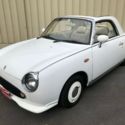 1991 Nissan Figaro Turbo - JDM - Right Hand Drive - GA Titled & Legal
1991 Nissan Figaro Turbo - JDM - Right Hand Drive - GA Titled & Legal
Mileage: 79255
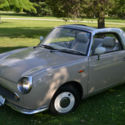 RARE CONVERTIBLE 1991 Nissan Figaro ROADSTER RIGHT HAND DRIVE CLASSIC VINTAGE
RARE CONVERTIBLE 1991 Nissan Figaro ROADSTER RIGHT HAND DRIVE CLASSIC VINTAGE
Mileage: 28,316
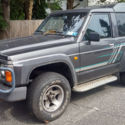 1991 Nissan Patrol Turbo 2-door 5-speed **Rare Left Hand Drive**
1991 Nissan Patrol Turbo 2-door 5-speed **Rare Left Hand Drive**
Mileage: 175,000
 NISSAN SKYLINE R34 GT-T 1999 LEFT HAND DRIVE (AS USA) $50,000
NISSAN SKYLINE R34 GT-T 1999 LEFT HAND DRIVE (AS USA) $50,000
Mileage: 65000
 1987 Nissan Patrol 5-speed **Rare Left Hand Drive**
1987 Nissan Patrol 5-speed **Rare Left Hand Drive**
Mileage: 235,000
 1987 Nissan Patrol 5-speed **Rare Left Hand Drive**LIKE ALL US VEHICLES
1987 Nissan Patrol 5-speed **Rare Left Hand Drive**LIKE ALL US VEHICLES
Mileage: 235,000
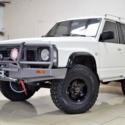 NISSAN PATROL TURBO DIESEL 5SPD MANUAL LEFT HAND DRIVE LIFTED HARD TO FIND
NISSAN PATROL TURBO DIESEL 5SPD MANUAL LEFT HAND DRIVE LIFTED HARD TO FIND
Mileage: 53,549
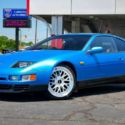 1991 Nissan RIGHT HAND DRIVE
1991 Nissan RIGHT HAND DRIVE
Mileage: 53027

